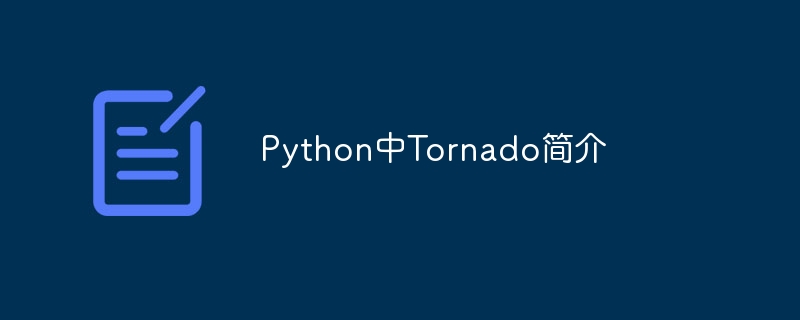

Introduction to Tornado in Python
Tornado is a Python web framework that is characterized by high performance and asynchronous IO. Tornado was first developed by FriendFeed, later acquired by Facebook, and gradually became an open source project. Tornado is designed to handle high-concurrency requests and is particularly suitable for building large-scale real-time web applications and APIs.
Tornado's asynchronous IO model is based on non-blocking network IO and uses an event loop to manage IO events. This model allows Tornado to handle a large number of concurrent requests without blocking other requests. This makes Tornado very suitable for processing input and output intensive tasks, such as real-time chat applications, push services and message queues.
Below, I will introduce some core features of the Tornado framework in detail and provide some code examples.
@tornado.gen.coroutinedecorator to define asynchronous coroutine functions. Here is a simple example:import tornado.gen import tornado.ioloop @tornado.gen.coroutine def async_task(): result = yield some_async_operation() # 处理异步操作的结果 # ... def main(): ioloop = tornado.ioloop.IOLoop.current() ioloop.run_sync(async_task) if __name__ == "__main__": main()
@tornado.web.routedecorator to define routing rules and bind them to processor functions. Here is a simple example:import tornado.web class HelloHandler(tornado.web.RequestHandler): def get(self): self.write("Hello, world!") def make_app(): return tornado.web.Application([ (r"/hello", HelloHandler) ]) def main(): app = make_app() app.listen(8888) tornado.ioloop.IOLoop.current().start() if __name__ == "__main__": main()
rendermethod to load the template, and thewritemethod to send the rendering results to the client. Here is a simple example:import tornado.web import tornado.template class RenderHandler(tornado.web.RequestHandler): def get(self): render = tornado.template.Template("{{title}}
") self.write(render.generate(title="Hello, world!")) def make_app(): return tornado.web.Application([ (r"/render", RenderHandler) ]) def main(): app = make_app() app.listen(8888) tornado.ioloop.IOLoop.current().start() if __name__ == "__main__": main()
The above are some core features and code examples of the Tornado framework. Through the above examples, we can feel the advantages of Tornado's high performance and asynchronous IO. If you are interested in building high-performance web applications and APIs, give Tornado a try.
The above is the detailed content of Introducing the Tornado web framework in Python. For more information, please follow other related articles on the PHP Chinese website!




